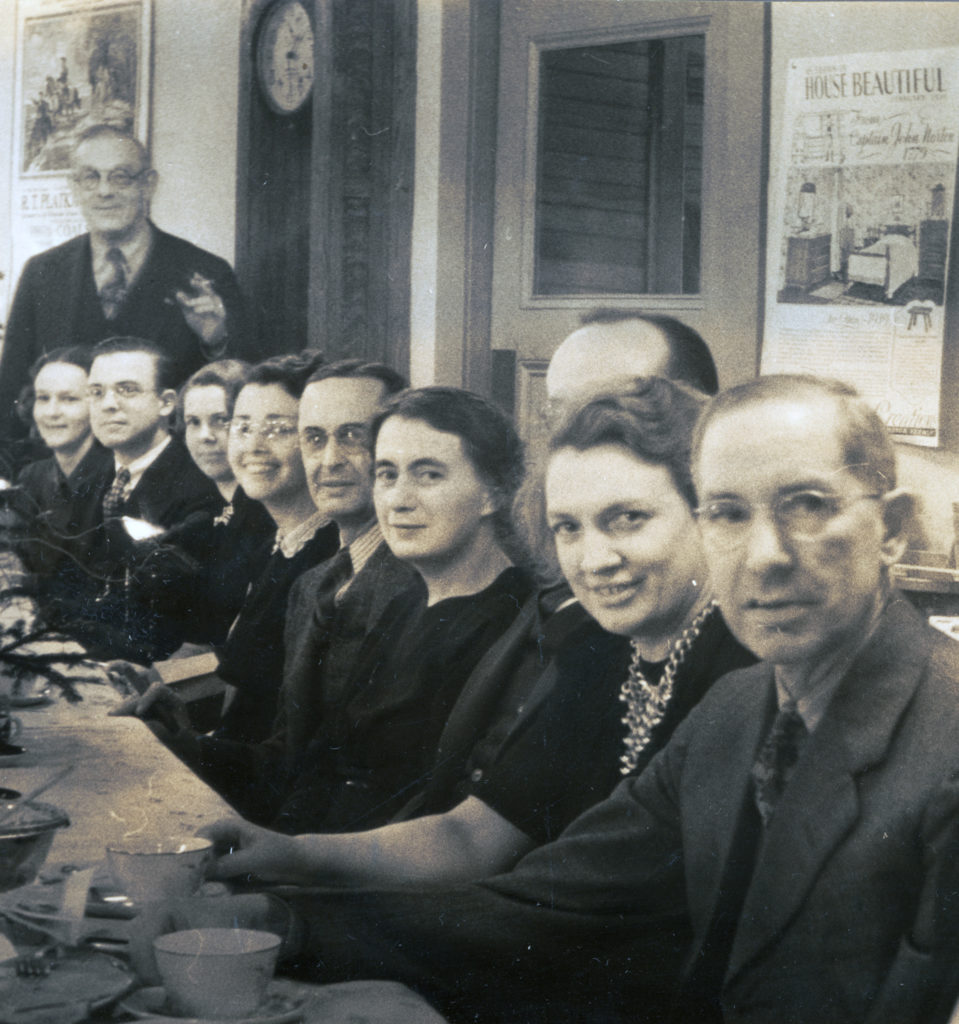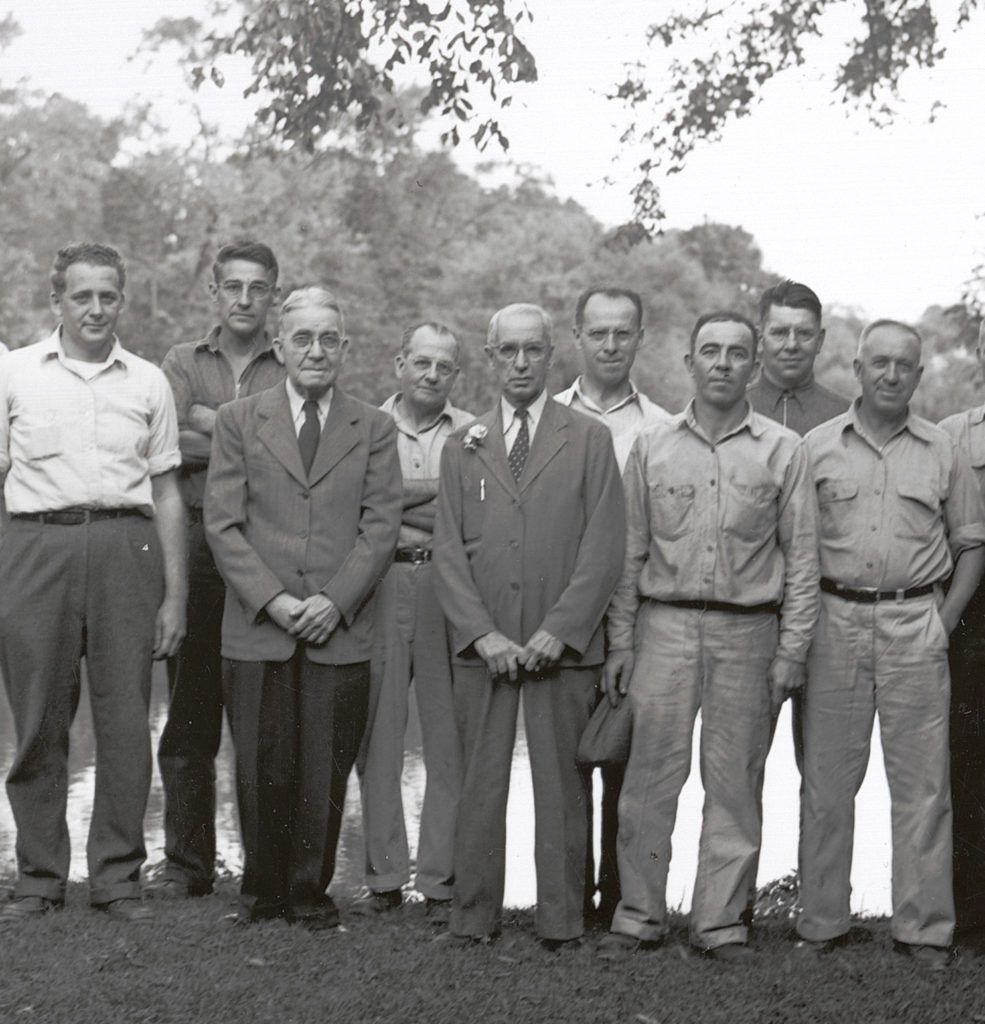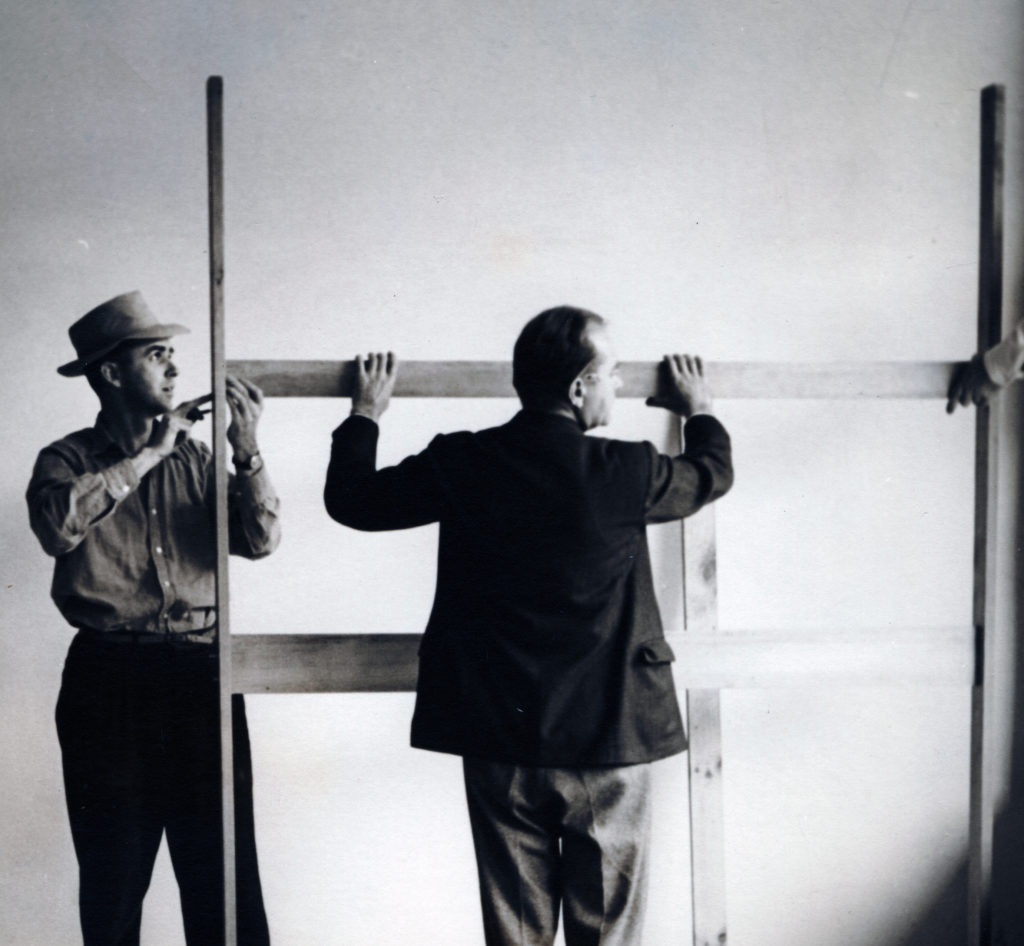


Photos by Reuben Greene
The author of this piece, Burton Bromley (1882-1975), worked at the H.T. Cushman Manufacturing Co. from 1899 to 1955.
On September 30, 1899, I decided I would leave school and go to work. I was in the second year of high school. I started out to find a job; my first try was Cushman’s. I went down to the plant, walked past the office, turned around and walked back, and I did this several times before I went back home. I lived on Mechanic Street and a good friend of mine lived nearby. Since he was a foreman at Cushman’s I went to his house that evening and asked what he could do to help me get a job. His answer was, “Be at the factory at seven tomorrow morning.” I was there, bright and early, and he met me at the door. Otherwise I would probably have gone back home.
My first work was polishing the ends of rods, which were six to seven feet long. On the rounded ends I would apply shellac and hold them against a wheel covered with leather. The shellac would get hot and make a polish. Next to me were four men polishing the full length of the rods. They used pieces of burlap on shellac; the rubbing made the shellac hot and brought out the polish. These pieces of burlap would soon get hard and be discarded. As I worked every once in awhile one of these hard pieces of burlap would hit me by the side of the head. I would look around and everyone would seem very busy. This went on about four days, but then it stopped. I must have become one of them.
$2.40 for 60 hours’ work
I could hardly wait for my first pay envelope. Finally it came. I trembled when I opened it. There was $2.40 for 60 hours’ work. I was soon moved along to better jobs, and after several I was earning 10centsan hour. My friendship with Mike helped a lot.
I worked in the room where the towel and hat racks were assembled. Only one girl worked there, the aunt to John Powers, and soon I found a fast way to assemble the racks and did very well for some time. Then I was moved to assemble easels. These were used in homes to support photographs. From there I went to making three-paneled screens, which were five or six feet high and hinged together. There were four other men in this room, and to my surprise I was made foreman. These men were very nice to me and tried to help me every way they could.
There was a man called the timekeeper who came by each night to check how much work and how many hours you had worked. Later the company bought a time clock, so this man’s job was finished. The company made him foreman in our assembly room, and I went back to the bench. Later he left to work for an insurance company. He said, “If you’ll give me my first insurance policy I will give you my job” (which I did).
In the meantime the company had started making mission furniture, very massive oak furniture, stained black. This department grew very fast. Mike, my friend, was foreman of that department, very much larger than mine. One day Will Cushman came to me and announced that the next morning I would be foreman of both departments. I said I couldn’t take Mike’s job. He said that someone would, as Mike wasn’t working for the company any longer. They couldn’t put up with his heavy drinking any longer. So, I was foreman for two departments, which was a pretty big job. I must have handled it very well for I never received any complaint. The year was 1917 or 1918.
As this business began to fade the company began making decorated breakfast suites, chairs, tables and serving tables much lighter weight than the mission furniture. After the paint had been sprayed on the furniture was placed on an assembly line where ten or twelve girls contributed to the hand decoration of each piece. Some made outlines, some might draw a leaf, and after each had done her part, the best artist would finish the flowers. This was a successful business, but not enough to run the factory.
Then Will Cushman made the first smoking stand. From the original cabinet with nickel-trimmed cigar rests, the business grew so fast that by 1920 a regular designer was hired. By 1930 about 200 different kinds of smoking stands and humidors were being manufactured. In 1928 Will Cushman said to me, “with our line of smokers we will not have to worry about business.” In less time than you can imagine, you couldn’t give smoking stands away. Cellophane had been invented and with cellophane-wrapped cigars, humidors were no longer needed. At the same time the Depression hit the country, Cushman Co. found itself out on a limb with only several hundred dollars in the bank, not much business and wages cut in half.
About that time Bennington College was ready for the furniture for the dormitories. Cushman got this business, but no one knew anything about making this type of furniture. It was pretty crude, but it was pretty late in the day, so the college accepted it. The drawers had no runs and would seldom work. The beds were fine, the head and footboards being the same, but they were adequate. Finally Will Cushman went to Hall McCullough and borrowed $50,000 on friendship. In 1933 a designer who had been trying to sell a different line of furniture came along and Cushman bought the line, which turned out to be a lifesaver. It was a heavier type of furniture copying the lines of early American furniture, which the designer found in antique shops and museums.
I remember the first piece of furniture in the line: a chair using the seat from an old cobbler’s seat. It was in the line for a good many years. Each piece was tagged telling where the idea originated and what it was used for. The business grew very fast. Will Cushman and Charlie Thompson designed the finish for the furniture, and since there was nothing like it on the market, it made a hit and lasted 25 years.
In 1949 I celebrated my 50 years with Cushman. At that time I was superintendent of the mill, assistant treasurer, small stockholder and a director.
In 1955 retired from the business after 56 active years, having watched it grow and change and provide many North Bennington and area men with dependable work. The business was sold in 1964, when I was 77, and since I was still a stockholder, I was sold along with the business. I don’t know how it was done, but now after 26 years I still get a monthly check.